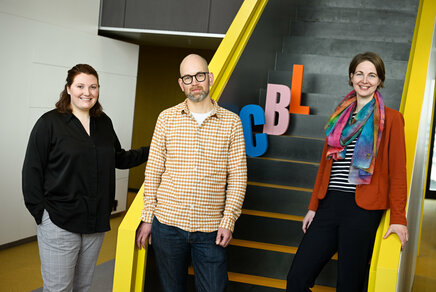Blood compatible supramolecular coatings for soft materials
Paul Bartels defended his thesis at the Department of Biomedical Engineering on May 7.

Innovation in biomedical technology has opened the door to advanced applications such as soft robotics, using flexible materials to perform complex functions such as mimicking human movement or implanting medical devices. However, ensuring blood compatibility when using soft materials in such applications remains a challenge. This compatibility is essential to prevent complications such as blood clots and rejection when these materials come in contact with biological environments, such as blood vessels. For his doctoral research, Paul Bartels focused on developing solutions to make soft materials blood-compatible using supramolecular coatings. These coatings offer a modular approach, allowing them to easily incorporate additional functionality through the use of additives.
A challenge in coating soft silicone materials was addressed by Bartels through the development of a new supramolecular coating. This coating not only improved adhesion to silicones, but also promoted the adhesion of endothelial cells to the material, which naturally form an antithrombogenic layer.
Another approach to achieve blood compatibility was the use of heparin, a natural anti-thrombogenic agent, in the coatings. The addition of heparin significantly reduced the number of platelets that stuck to the surface of the material, indicating increased antithrombogenicity. This strategy was even combined with silicone coatings, resulting in coatings that showed both less platelets and more cell adhesion.
In vivo
Bartels continued his research with in vivo studies in which the supramolecular coatings with heparin functionalization were implanted in rat aortas. After one day, most of the materials were still functional, indicating their potential durability and effectiveness in biological environments.
Finally, these coatings were successfully used in a biomedical application, specifically in a soft robotic heart. The supramolecular coating on the inside of the heart chamber resisted water flow, demonstrating its robustness and usability in a simulation of a realistic environment.
Bartels' research highlights the versatile approaches to develop supramolecular coatings for blood compatibility and cell adhesion on various soft materials used in biomedical applications. Integrating these coatings can improve the safety and efficacy of soft materials in medical applications, expanding opportunities within biomedical technology.
Title of PhD thesis: “Blood compatible supramolecular coatings for soft materials”
Supervisors: Patricia Dankers and Anthal Smits
Latest news
![[Translate to English:] [Translate to English:]](https://assets.w3.tue.nl/w/fileadmin/_processed_/b/d/csm_Lopes%20Cardozo%20Banner%20image%20BvOF%202024_0320_CZW%20Niek%20Lopes%20Cardozo_47a2e34d3b.jpg)

